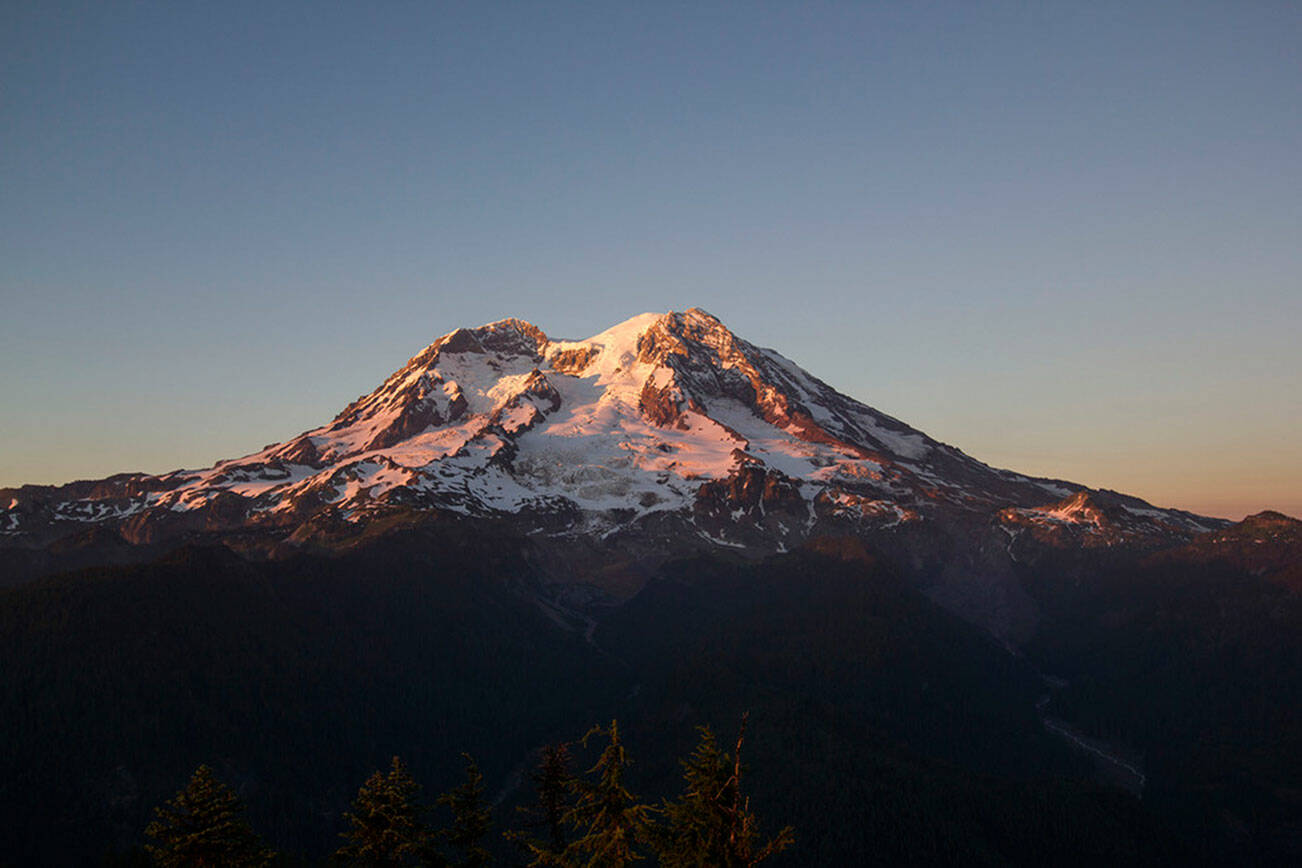The medical examiner has identified an 80-year-old hiker who died while hiking Mount Rainier earlier in June.
Earl Dawes Eddy III, of Spokane, embarked on a solo climb of the mountain on May 30, and was last seen that day at 8:30 p.m. upward bound at Cathedral Gap, according to the park service. Park rangers were notified of an overdue climber two days later on June 1 and began searching climbing routes.
Over the next six days, the park service used helicopter and ground teams to search the area in which Eddy was hiking. An Army National Guard Blackhawk helicopter found no signs of body heat while searching for the missing hiker during an infrared night flight on June 3.
On Monday, June 5, around 9 p.m., two guides from Rainier Mountaineering, Inc. (RMI) found an unresponsive climber in a crevasse and notified the park.
The next day, a team of four climbing rangers and an RMI guide went on foot to the crevasse. They extricated the dead climber, who was then flown off the mountain. He was identified by the medical examiner’s office as Eddy.
Eddy is the second hiker this hiking season to perish while climbing the mountain. On May 31, the park service recovered the body of 41-year-old Brian Harper, who was part of an Alpine Ascents International expedition, from the Cowlitz Glacier near the summit of the mountain.
“In addition to the park’s climbing rangers and aviation resources, the park would like to thank volunteers from Central Washington, Everett, Olympic, and Tacoma mountain rescues; climbing guides from International Mountain Guides (IMG), Rainier Mountaineering, Inc. (RMI), and Alpine Ascents International (AAI) for assistance searching during their routine guided climbs in active search zones; the Army National Guard 1-168th GSAB for conducting the FLIR flight; and the Army National Guard 2-135th GSAB for making their Chinook helicopters available as contingency resources,” the Park Service said in a press release.
Mount Rainier, or Tahoma, is well known as a popular yet challenging climbing destination, extremely so for those seeking to summit the 14,411 foot mountain.
Solo climb permits are approved based on factors including the applicant’s experience, skill, plan, forecasted weather, the proposed route and dates, and their equipment list, according to the park. Before departing on any climb, the park advises climbers to leave their itinerary with a trusted friend or family member.
Information on climbing routes, weather, guide services, permits, route briefs and other safety information is located on the park’s webpage: https://www.nps.gov/mora/planyourvisit/climbing.htm


